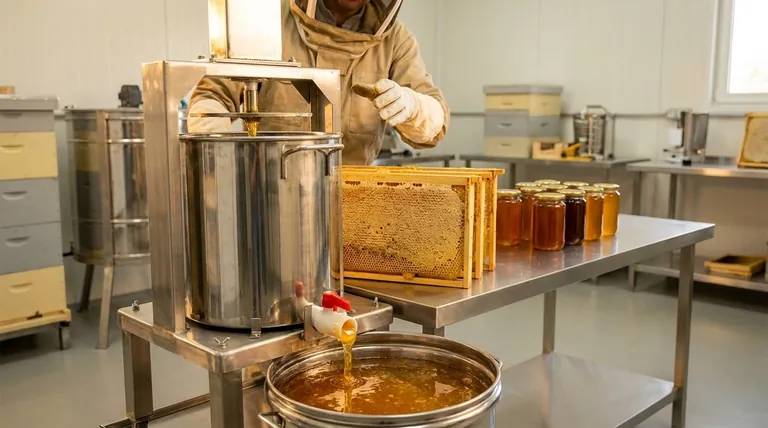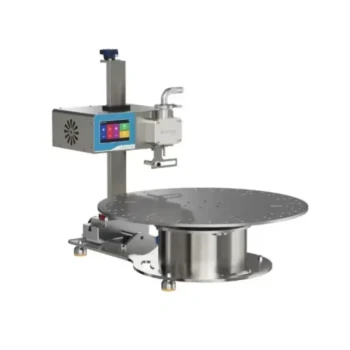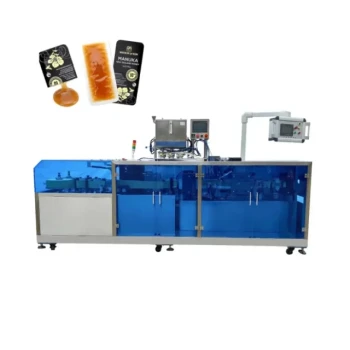In short, beekeepers manage crystallization-prone honey through two primary strategies: avoidance and rapid extraction. They either remove specialized equipment like Flow Frames and harvest this honey using conventional methods for bee feed, or they leverage the design of systems like the Flow Hive to harvest the honey quickly before it has a chance to solidify.
The most effective way to manage crystallization is not by fixing it after the fact, but by understanding the specific nectar sources in your area and adjusting your harvesting strategy—and sometimes your equipment—to match the seasonal flow.

Understanding the Root Cause: The Science of Crystallization
To effectively manage crystallization, you must first understand why it happens. It is a natural process, not a sign of spoilage.
The Glucose to Fructose Ratio
All honey is composed primarily of two sugar types: glucose and fructose. The ratio between these two is the single most important factor determining how quickly honey will crystallize.
Honey with a higher glucose content will crystallize rapidly. Think of glucose molecules as uniform blocks that stack together easily to form solid crystals. Nectars from plants like canola, ivy, and certain asters are notoriously high in glucose.
Conversely, honey with a higher fructose content remains liquid for much longer.
The Role of Temperature
Temperature acts as a catalyst for crystallization. The process occurs most rapidly between 10-18°C (50-65°F).
This is why honey can remain liquid in a warm hive but may begin to solidify quickly once harvested and stored in a cooler pantry.
Proactive Management Strategies
The best approach is to anticipate a high-glucose nectar flow and act accordingly. This is a decision you make before the honey is capped.
Strategy 1: The Avoidance Method
For beekeepers using a Flow Hive, the most risk-averse strategy is to remove the Flow Super entirely when crystallization-prone plants are flowering.
They replace it with a standard super containing conventional frames. This allows them to collect the problematic honey without risking damage to the intricate Flow Frame mechanism.
This honey is often not bottled for sale. Instead, it is used as a highly nutritious winter feed for the bees, providing them with their own natural stores rather than sugar syrup.
Strategy 2: The Rapid Harvest Method
The Flow Hive is designed with features that can help mitigate, though not eliminate, the risk.
First, the Flow Frames retain heat from the brood box below, which can help keep the honey in a liquid state longer than in a conventional super.
Second, the system allows for quick and easy harvesting. You can monitor the frames and, as soon as the honey is ready, extract it immediately. This shortens the time window in which crystallization can begin. You can even sample the honey directly from the frame to check its viscosity.
When Crystallization Occurs: Remediation and Risks
Even with careful planning, crystallization can sometimes occur where you don't want it to.
In the Jar: The Gentle Fix
If your bottled honey crystallizes, the solution is simple. Place the jar in a warm water bath and stir gently as the crystals dissolve.
Avoid using a microwave or excessive heat, as this can degrade the honey's delicate flavors and beneficial enzymes.
In the Flow Frame: The Critical Problem
Crystallization inside a Flow Frame is a more serious issue, as it can block the mechanism and render it inoperable. You have two options to resolve this.
The first option is to wait. Often, the bees will re-consume the crystallized honey and clean out the cells themselves. This is the simplest but least predictable solution.
The second, more active solution is to remove the affected frame from the hive and soak it in warm water. This will dissolve the crystallized honey, allowing you to clean the frame and reset it for future use.
Making the Right Choice for Your Goal
Your strategy should be dictated by your primary objective and risk tolerance.
- If your primary focus is protecting your equipment: Use the avoidance method. Remove the Flow Super during high-risk nectar flows and use conventional frames to harvest that honey for bee feed.
- If your primary focus is attempting to harvest this honey: Use the rapid harvest method. Leverage the Flow Hive's heat retention and quick extraction capabilities, but be prepared to act fast and accept the risk of in-hive crystallization.
- If your primary focus is managing already-harvested honey: Store it in a stable, room-temperature environment and use a gentle water bath to re-liquefy any crystals that form.
Ultimately, successful hive management comes from being in tune with your local environment and its unique nectar flows.
Summary Table:
| Strategy | Goal | Key Action |
|---|---|---|
| Avoidance Method | Protect Equipment | Remove Flow Super; use conventional frames for bee feed. |
| Rapid Harvest Method | Harvest Honey Quickly | Leverage Flow Hive's heat retention & quick extraction. |
| Gentle Remediation | Fix Crystallized Honey | Use a warm water bath for bottled honey; avoid microwaving. |
Equip your apiary for success with HONESTBEE.
Crystallization-prone honey is a manageable challenge with the right strategy and equipment. At HONESTBEE, we supply durable, wholesale-focused beekeeping supplies and equipment to commercial apiaries and distributors. Whether you need robust conventional frames for the avoidance method or reliable extraction tools for a rapid harvest, our products are designed to support your hive management goals.
Let us help you build a more resilient and productive operation. Contact our team today to discuss your specific needs and explore our product catalog.
Visual Guide

Related Products
- 10L Stainless Steel Electric Honey Press Machine
- Stainless Steel Manual Honey Press with Guard for Pressing Honey and Wax
- Stainless Steel Honey Press Wax Press with Tank
- Electric Flatting and Embossing Machine with Tray for Beekeeping
- Honey Wax Separating Wax Press with Metal Screw Wax Separator Machine
People Also Ask
- What voltage options are available for stainless steel screw honey pumps? Choose the Right Power for Your Scale
- What are the key features of a honey press? Maximize Yield with Durable, Efficient Extraction
- What are the benefits of using a honey press for Warré or Top Bar beehives? Maximize Your Natural Harvest
- How does pressed honey compare to extracted or crush-and-strain? Unlock the Full Flavor of the Hive
- What are the unique characteristics of honey presses? Maximize Honey Yield for Small-Scale Beekeeping



















